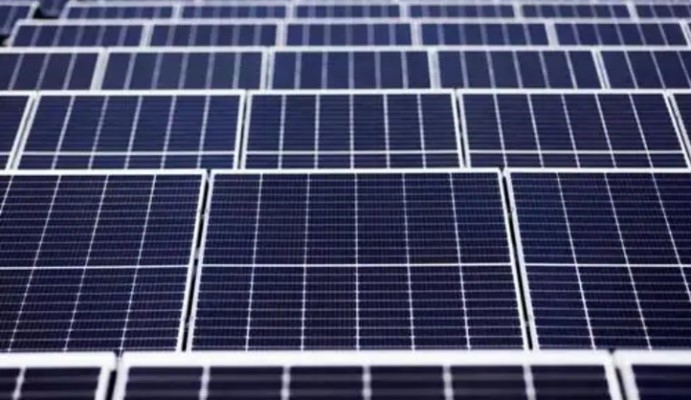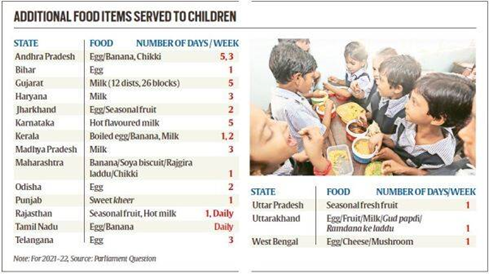Monday, 18th April 2022
WB Paper on Poverty in India
In News
A working paper published by World Bank titled, “Poverty in India” has said that extreme poverty in India is 12.3% points lower in 2019 than in 2011.
Important Findings
- The poverty headcount rate in India has declined from 22.5% in 2011 to 10.2% in 2019, a reduction of 12.3 percentage points.
- National poverty headcount ratio is the percentage of the population living below the national poverty lines. National estimates are based on population-weighted subgroup estimates from household surveys.
- Poverty reduction was higher in rural areas compared to urban India.
- Rural poverty declined by 14.7 percentage points from 2011 to 2019 (26.3% in 2011 to 11.6% in 2019), while in urban areas the decline was 7.9 percentage points (14.2% in 2011 to 6.3% in 2019).
- Real incomes for farmers with the smallest landholdings have grown by 10 percent in annualized terms between the two survey rounds (2013 and 2019) compared to a 2 percent growth for farmers with the largest landholding.
- Two incidents of rising poverty were detected in the corresponding period:
- Demonetization (2016): urban poverty rose by 2 percentage points.
- Economic slowdown (2019): rural poverty rose by 10 basis points due to growth slowdown.
- A slight moderation in consumption inequality was observed since 2011, but by a margin smaller than what is reported in the unreleased NSS-2017 survey.
- The extent of poverty reduction during 2015-2019 is estimated to be notably lower than earlier projections based on growth in private final consumption expenditure reported in national account statistics.
- Pradhan Mantri Garib Kalyan Yojana (PMGKAY) has been responsible for the stable poverty levels in India during the COVID-19 pandemic.
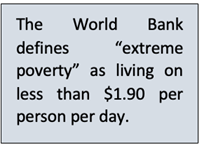
Significance of the Findings
- The World Bank’s paper is significant as India has no official estimation of recent periods.
- The last expenditure survey was released in 2011 by the National Sample Survey Organisation (NSSO), when the country had also released official estimates of poverty and inequality.
- In view of the data quality issues, in November 2019, the ministry of statistics and programme implementation (MOSPI) had decided to hold the release of the consumer expenditure survey results of 2017-2018.
- This paper sheds light on how poverty and inequality have evolved since 2011 using a new household panel survey, the Consumer Pyramids Household Survey conducted by the Centre for Monitoring Indian Economy (CMIE), which is conducted continuously at four-month intervals since its inception in 2014.
- An IMF paper noting elimination of extreme poverty in India had relied on National Sample Survey Organisation’s (NSSO’s) consumption expenditure survey of 2011-12.
Conclusion: Both the World Bank and IMF papers have agreed to the fact that India has seen a reduction in Extreme Poverty levels since 2011. It is a noteworthy fact that India has halved the percent of Indians living in poverty dropped from 55% to 28% from 2008 to 2018. Nevertheless, to achieve the Sustainable Development Goal 1- ‘end to poverty in all its manifestations by 2030’, India will have to focus on the multidimensional poor of the country (According to Global MPI 2021, India's rank is 66 out of 109 countries.)
Sources:
- Poverty in India declined 12.3 percentage points between 2011-2019: World Bank
- World Bank report: Extreme poverty in India eased 12.3 percentage points during 2011-2019
- Extreme poverty in India fell sharply in 2011-19: World Bank paper
- Policy Research Working Paper: Poverty in India Has Declined over the Last Decade But Not As Much As Previously Thought
- Poverty headcount ratio at national poverty lines
- World Bank FEATURE STORY- Ending Extreme Poverty
Standing Deposit Facility
In News
In its first bi-monthly monetary policy meeting for FY 2023, the Reserve Bank of India announced a new tool to absorb excess liquidity from the system – Standing Deposit Facility (SDF).
About the News
- The “extraordinary” liquidity measure has been undertaken in the wake of the pandemic, combined with the liquidity injected through various other operations of the RBI which have left a liquidity overhang of the order of Rs 8.5 lakh crore in the system.
- SDF is the RBI’s new tool is effective as of April 8, 2022 with main purpose to reduce the excess liquidity in the system, and control inflation.
What is SDF?
- Brief history: The idea of SDF was first introduced by a monetary policy committee led by Urijit Patel, which suggested SDF as a non-collateralized concurrent offering.
- In 2018, the Reserve Bank of India Act was empowered to introduce the new tool after the government allowed it to amend the RBI Act as a result of demonetisation when banks were plush with excess cash.
- In 2018, the amended Section 17 of the RBI Act empowered the Reserve Bank to introduce the SDF – an additional tool for absorbing liquidity without any collateral.
- Role: The SDF will replace the fixed rate reverse repo (FRRR) as the floor of the liquidity adjustment facility corridor. Both the standing facilities — the MSF (marginal standing facility) and the SDF will be available on all days of the week, throughout the year.
- Operation: The SDF rate will be 25 bps below the policy rate (Repo rate) or 40 basis points higher than reverse repo rate.
- No collateral required: SDF empowers the central bank can absorb excess liquidity from the commercial banks without an exchange of collateral like government-backed securities (G-Secs).
- Facility for banks: The SDF is currently available as an overnight facility where banks can engage in transactions available to them between 17:30 hrs to 23:59 hrs on all days, including Sundays and holidays.
- E-kuber: Banks can use the central bank’s electronic portal, ie, the e-Kuber system to use the facility.
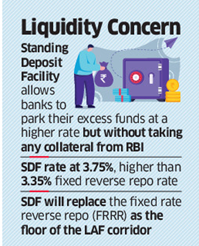
Why SDF is important?
- Managing liquidity: RBI’s introduction of SDF effectively marks the rate hike of lower end of the LAF (liquidity adjustment facility) corridor at 3.75% and with the reverse repo rate hike is at 40 bps, it will help sucking the excess liquidity from market.
- Increased demand for bonds: SDF conditionality of no collateral of G-secs to be given by the RBI to banks will free up securities from SLR holdings of banks. This will thus result in lowering of excess SLR holdings and will lead to an increase in demand for bonds.
- Strengthening monetary policy: By removing the binding collateral constraint on the RBI, the SDF strengthens the operating framework of monetary policy.
- Non-disruptive: SDF will engage in a gradual and calibrated withdrawal of this liquidity over a multi-year time frame in a non-disruptive manner
- Win-win situation: Interest rate for SDF is a win-win for both the central bank and commercial banks, as it will be more attractive for the commercial banks to pump that liquidity back to the central bank due to higher returns, while for the central bank it would not need to offer any security to the commercial bank.
For article related to this topic, refer: https://edukemy.com/current-affairs/gazette/2022-04-11/rbis-stance-in-mpc-meeting
Sources:
Credit card to MSME entrepreneurs
In News
The Parliamentary standing committee on finance has recently pitched for providing a credit card under SIDBI to MSME entrepreneurs to ensure access to regular credit to small businesses.
About the News
- The card will be on the lines of Kisan credit card of the National Bank for Agriculture and Rural Development (NABARD) to bring crores of MSMEs into the formal financial system including street vendors and kirana stores.
- It will help the small businesses with working capital, ensure trade financing for their revenues, provide capital loans at affordable rates, and necessary credit guarantees.
- It will put in place a mechanism for payment scores and a significant ramp up of SIDBI to ensure access to regular credit to small businesses.
- The idea is that when we sign up for the Udyam portal, one will automatically get a credit card which is the Vyapar credit card.
- The credit card can provide short-term working capital loans at low-interest rates and can be further extended to provide collateral-free loans like the Rs 1 lakh collateral-free facility available to KCC holders.
- Every institution can decide how big a line of credit they want to give and with that they establish our payment history.
- This will not only bring MSMEs in a formal financing system but will also cater to their immediate financing needs.
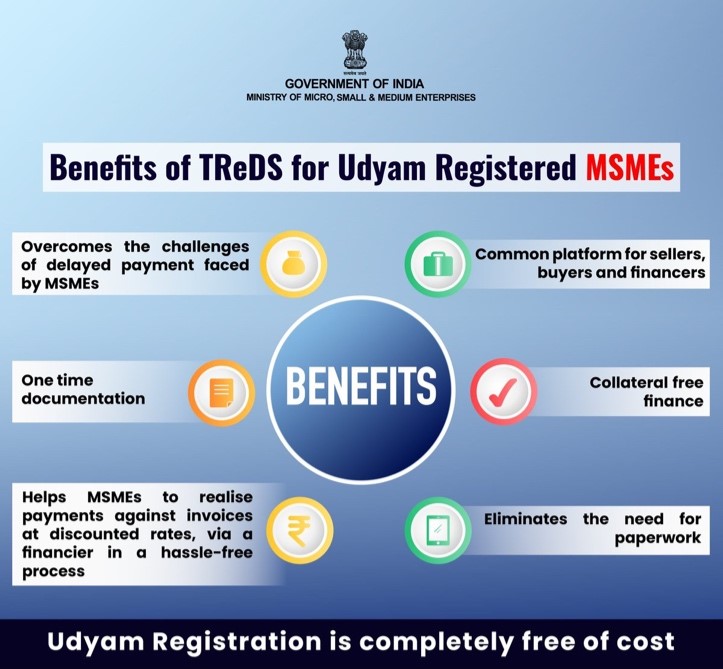
Why this move?
- Out of 6.34 crore MSMEs in the country, less than 40% borrowed from the formal financial system.
- The overall credit gap in the MSME sector is estimated to be Rs. 20-25 lakh crore.
- And also that banks have been reluctant in lending to the MSME sector due to the lack of reliable data about enterprises operating in this sector and hence there was a need to create an integrated digital ecosystem.
Source:
- Parliamentary panel for providing credit card to MSME entrepreneurs
- Parl panel: Link Udyam portal with CIBIL, other databases; need UPI-like platform, credit card for MSMEs
- Udyam Portal
Image source:
International Day for Monuments and Sites or World Heritage day
On April 18, 1982, International Day for Monuments and Sites, also known as World Heritage Day was created and approved by the UNESCO General Conference. The aim is to promote awareness about the cultural heritage and diversity on the planet. This special day offers an opportunity to raise the public's awareness about the diversity of cultural heritage and the efforts that are required to protect and conserve it, as well as to draw attention to its vulnerability. The theme for World Heritage Day 2022 is "Heritage and Climate". India is home to a total of 3691 monuments and sites. Of these 40 are designated as UNESCO World Heritage Sites, including places like the Taj Mahal, Ajanta Caves and Ellora Caves. World Heritage Sites also include natural sites like the Kaziranga National Park in Assam.
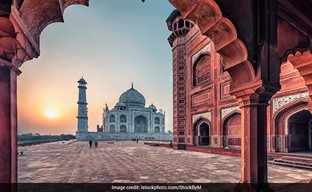
Source:
National Gas grid
In News
The parliamentary Standing Committee on Petroleum and Natural Gas has recently presented report on ‘National Gas Grid’ including PNG and CNG.
What is the National gas grid?
- About: The National Gas Grid is a natural gas pipeline network, which was launched by the Indian government to expand to the existing operational network of 17,016 km to 32,559 km.
- This comes in the backdrop of India’s push for a gas-based economy. The country consumes around 145 million standard cubic meters a day (mmscmd) of gas.
- Regulation: These pipelines are regulated under authority of Petroleum and Natural Gas Regulatory Board (PNGRB) of Ministry of Petroleum and Natural Gas.
- Coverage: The PNGRB on its part has authorised 232 geographical areas (GAs) through 10 city gas distribution (CGD) bidding rounds. This covers around 71% of India’s population and 53% of the country. Also, a gas exchange has been set up.
- Connecting North-east: PNGRB has also authorized Indradhanush Gas Grid Limited (IGGL), a joint venture company of five Central Public Sector Enterprises (CPSEs) i.e., IOCL, ONGC, GAIL, OIL and NRL for the development of Northeast Gas Grid to connect eight states of Northeastern India.
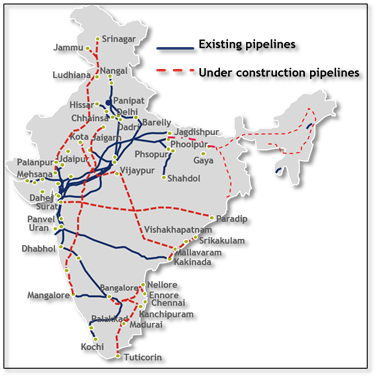
Why national gas grid is important for India?
- Improves supply of LNG: Creation of an interconnected “National Gas Grid” will support the wider supply and distribution of R-LNG throughout the nation. Also, pipelines are an economical, safe, and hassle-free mode of gas transportation.
- Improved utilisation: The average capacity utilization of natural gas pipelines stood at 54% during 2018–2019. A uniform grid will help improving the capacity utilization of the pipeline.
- Rising demand for LNG: In the coming years, LNG and CNG will have greater use, especially LNG as a transport fuel, which will create a market for LNG.
- Reducing carbon stress: Apart from the anchor customers like the power/fertilizer/petrochemical plants, and the refineries, the City Gas Distribution has the potential to cover 53% of the geographical area (GA) of the country and 70% of the population. A national grid will help reducing the carbon stress in economy.
- Enablers for natural gas market growth: A uniform grid will lead to creation of a conducive environment for investment in gas market development and will help attract large private players in the entire gas value chain.
- Demand Supply Synergy: Often the natural consumption centres are away from production centres, so pipeline connectivity or virtual pipelines are critical to meet the demand.
- Self- reliant: With the goal of Atmanirbhar Bharat at the forefront, investing in pipeline infrastructure will be a step forward in self-reliance, and decreased dependency on imports.
- Gas comprises about 2% of India’s primary energy mix, far behind the global average of 24%. The government plans to increase this share to 15% by 2030.
- Business and Employment: Transparency and speedy progress in the natural gas sector will promote ease of doing business. This in turn will generate employment in gas-consuming sectors and will aid investment in industries downstream, such as City Gas Distribution.
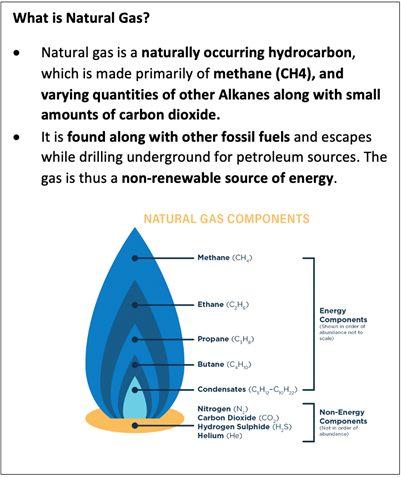
What are the Challenges with National Gas Grid?
- Delays in various projects: There is several delays in projects such as Haldia – Jagdishpur pipeline mainly due to factors including- demands for higher land compensation by farmers, issues of right of use, and multiplicity of agencies involved in granting clearances and permissions.
- Capacity under-utilisation: Capacity utilisation of existing natural gas pipelines is on the lower side, with some of them operating at 10% to 20% level of utilisation. For example, GAIL has noted, it can use only 47% of its existing 11,500km gas pipeline capacity.
- This leads to a low return on investment for companies, thus disincentivizing more companies to carry forth natural gas exploration.
- Poor customer base: Customer base for gas in India is almost 76 lakh households while the potential is to reach nearly 4.23 crore households.
- Poor consumption and deficit: Petroleum Planning and Analysis Cell (PPAC) records suggest that the average consumption of natural gas had been significantly lower than PNGRB’s projections mainly due to sluggish natural gas demand in the industries and transport sector.
- Skewed coverage: The PNG connections are not able to reach every household even when that particular area has been marked as covered.
- The gas fields are concentrated in only a few pockets across the country, namely in Bombay high, offshore Mumbai coast, Tripura and Assam in the North East, and Krishna Godavari Basin down south.
- As Petroleum, including natural gas, falls under the Union List in the Constitution of India, only the central government can make laws and take decisions in the gas energy department. This leads to clashes in land acquisition at the local level, further delaying gas projects.
- Safety issues of the workers become a major concern given the explosive nature of natural gas, including accidents due to human error and technical fault.
- Apart from the impact on human beings, drilling to explore gas can have major repercussions on the marine habitat. Marine life is already suffering due to excessive oil drilling and oil spills, added to which exploring natural gas can further deteriorate their habitat.
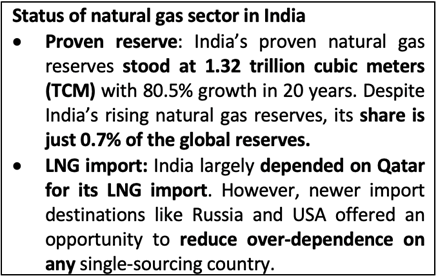
What are the major recommendations of the committee?
- Demand and supply of natural gas:
- More exploration: Increasing the blocks awarded for exploration and intensifying activities for exploration and production from already discovered fields.
- Infrastructure: Pursuing diplomatic efforts to expedite construction of transnational pipelines from neighbouring regions
- Tax incentives: Incentives like tax breaks may be provided for exploitation of unconventional hydrocarbons in awarded blocks.
- Gas grid infrastructure: To expedite the expansion of the gas grid, the Committee recommended the Ministry to issue approval for pipeline laying with a half-yearly or yearly reconciliation mechanism.
- Single window clearance: Develop a unified fast track system to reduce time to process permissions. Evolve a coherent mechanism with state governments.
- Capacity utilisation of pipelines: The Committee has noted that pipelines operating for over 10 years have been constrained by limited availability of domestic gas. Immediate steps must be taken to expedite enhancement of domestic production through exploitation of unconventional sources and interconnecting various pipelines.
- Functioning of PNGRB: There is an urgent need to fill in the vacancies, develop co-ordination with different ministries to frame rules and regulations for the strengthening the functioning of PNGRB.
- Public Liability Insurance: As per the PNGRB Regulations 2010, City Gas Distribution (CGD) entities are required to have insurance for consumers. The Committee recommended to increase awareness among Piped Natural Gas (PNG) / Compressed Natural Gas (CNG) consumers about the details of this policy.
- CNG network: The Committee noted that other than Delhi and Mumbai, most cities where CGD is operational don’t have high penetration of CNG stations. The Committee recommended operationalising all the planned CNG stations and adopting a more nuanced, proactive and scientific approach for making CNG available on national highways.
Conclusion: It’s a common idiom, that the proof of the pudding is in the eating. We are yet to see tangible outcomes from this energy source, which is still in its nascent stage. To reap the benefits, Natural Gas has to be a viable source of energy, and India needs to balance affordability, access, energy security, and environmental sustainability. This must be accompanied by developing requisite infrastructure in the form of terminals, stations, and pipelines.
Question: Discuss the need for development of the National gas grid in India.
Sources:
Bilquis Edhi
This is image of Bilquis Edhi, whose death was condoled by the Prime Minister of India. Bilquis Edhi was called the mother of orphans and unwanted children in Pakistan. The lifelong dedication of Bilquis to humanitarian work touched the lives of people across the globe. Bilquis Edhi was awarded Mother Teresa Memorial Award for Social Justice and Hilal-i-Imtiaz recognising her work for taking care of hundreds of babies abandoned by their families mainly due to poverty. Bilquis was born in Bantwa area of Indian Gujarat on August 14, 1947. As a teenager, Bilquis joined Edhi Foundation with the aim to do something worthwhile for the people. Biquis Edhi had started a cradle project wherein she placed over 300 cradles outside their various centres. The mothers were allowed to quietly leave their unwanted babies without any questions asked. The Edhi foundation also brought up Indian girl Geeta, who wandered into Pakistan when she was 10 years of age. Geeta got reunited with her mother in India in 2015.

Source:
‘Cyclopean wall’
- Context: The Bihar government has recently sent a fresh proposal to the Archaeological Survey of India (ASI) to get Cyclopean wall listed in the UNESCO World Heritage Site.
- It is a 2,500 years old structure situated in Rajgir, Bihar.
- It is 40 km long and is believed to have been built in the pre-Mauryan era using massive undressed stones which encircled the ancient city of Rajgir to protect it from external enemies and invaders.
- Believed to have been built before 3rd century BC, the wall is among the oldest examples of cyclopean masonry in the world.
- The Cyclopean Wall is similar to “Frontiers of the Roman Empire” that runs through Germany, UK and Northern Ireland, which was included on UNESCO’s world heritage list in 1987.
- Nalanda University and Mahabodhi temple of Bodhygaya are other UNESCO World Heritage Sites in Bihar.
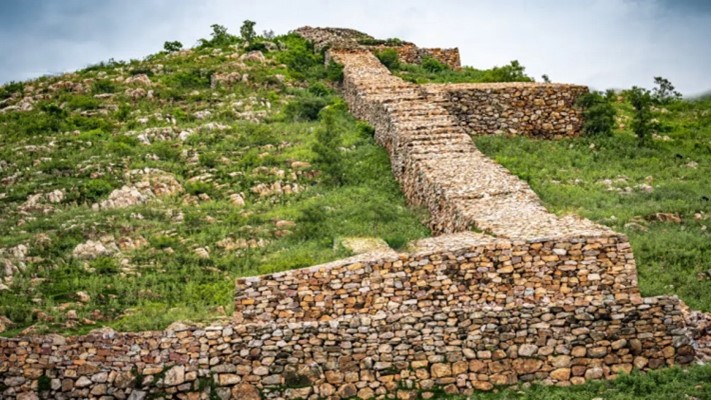
Source:
- Bihar sends fresh proposal seeking UNESCO’s heritage tag for 2,500-yr-old ‘Cyclopean wall’
- Bihar sends fresh proposal seeking UNESCO’s heritage tag for 2,500-yr-old ‘Cyclopean wall’
Image source:
e-DAR portal
- Context: The Ministry of Roads, Transport and Highways (MoRTH) has recently developed a portal named ‘e-DAR’ (e-Detailed Accident Report).
- It is a portal is designed by the government in consultation with insurance companies to provide instant information on road accidents with a few clicks to help accelerate accident compensation claims, bringing relief to victims’ families.
- Digitalised Detailed Accident Reports (DAR) will be uploaded on the portal for easy access.
- The web portal will be linked to the Integrated Road Accident Database (iRAD) and from iRAD, applications to more than 90% of the datasets would be pushed directly to the e-DAR.
- Thus, e-DAR would be an extension and e-version of iRAD.
- The portal would conduct multiple checks against fake claims by conducting a sweeping search of vehicles involved in the accident, the date of accident, and the First Information Report number.
- The portal would be linked to other government portals like Vaahan to access information on driving licence details and registration of vehicles.
- It would also provide geo tagging of the exact accident spot along with the site map.

Source:
Image source:
Global Network of Silk cities
- Context: Bengaluru has recently become the first Indian city to get into the global network of silk cities.
- With this, India becomes the ninth nation on this silk map alongside France, China, Brazil, Japan, Uzbekistan, Georgia, Italy, and Spain.
- Silky Cities network is an international network of cities and silk metropolises located in eight countries (now nine) which aims to protect silk and its related heritage” from all over the globe.
- The network helps artisans and craftsmen to exchange knowledge, build trade relations and understand various craftsmanship techniques.
- Currently, 13 best silk-producing cities and nine countries are members of this network.
- Silk is known for its unmatched qualities that are difficult to find in other fibres, and has many applications.
- Added to this, it offers robust business opportunities.
- With textile sector becoming a highly technological domain now, Bengaluru known as India’s Silicon Valley, will offer technological competence that could facilitate innovation in textiles.

Source:
Image source:
Vaquita porpoise - Edukemy Current Affairs
- Context: As per the United States Commission for Environmental Cooperation (CEC), Vaquita porpoise has been nearing extinction.
- The vaquita porpoise is the world’s smallest cetacean and the most endangered marine mammal.
- It has the smallest range of any whale, dolphin, or porpoise, and only lives in a small 1,500 square-mile area in Mexico’s upper Gulf of California, near the town of San Felipe.
- It has a rounded head and black patches around its mouth and eyes and it only measures up to five feet in size.
- The population of the species has declined 98% in two decades (from around 570 animals in 1999 to 10 animals in 2019).
- Vaquitas face threats of lucrative illegal fishing industry, ineffective conservation measures, bycatch in gillnets that are set to catch shrimp and fish, habitat fragmentation etc.
- It has been listed under the International Union for Conservation of Nature Red List as ‘critically endangered’.
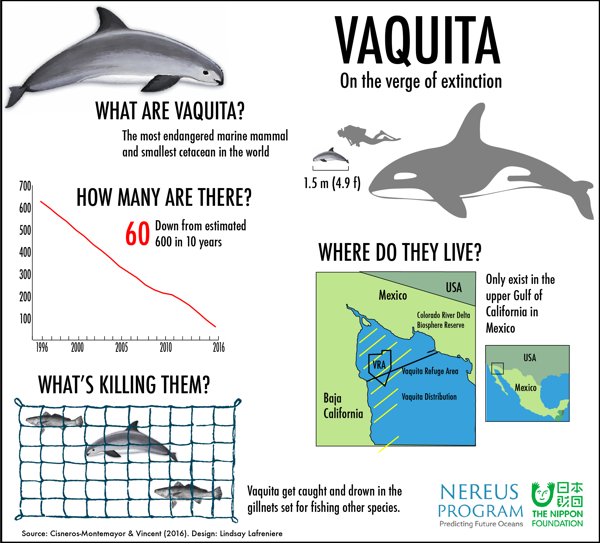
Source:
- Extinction threat: Vaquita porpoise global population down to only 10
- There are fewer than 10 tiny vaquita porpoises left. Can they be saved?
Image source:
Divide forex reserve into two components: Hindustan Times
Essence: Several countries including the US and EU have frozen the Russian central bank’s assets held in foreign-denominated currencies as a punitive measure for invading Ukraine. This step has eroded trust of other Central banks in US dollars as a safe investment option and demonstrated that the nature of risk has changed from purely financial to one of geoeconomics.
This development has provided India which holds a major part of its foreign reserve in dollar an opportunity for introspection. Experts are of the opinion that India should divide forex reserve into two components — a safe component with the traditional sovereign debt and gold and a strategic component with focus on holding oil and rare earth elements. This will help India to diversify and mitigate geopolitical risk.
Why should you read this article?
- To understand changing nature of currency risk India may get exposed to.
- To understand steps which India should take to mitigate these risks.
Source:
A fatal friendship with Beijing: Indian Express
Essence: The editorial speaks about the huge economic downturn that has led to fall of economies of Myanmar, Pakistan and Sri Lanka, for which friendship with China and their loans have to be held accountable. It began with Myanmar’s military junta which gained power in 1988 and was supported by China’s trade and cooperation agreement. Until now, Myanmar had diversified economy, but since the regime change, sanctions and curbs led to China being its sole supporter. Trade in wood (teak) is a good example contributing 70% of Myanmar’s exports to China.
Pakistan too, had a decent beginning, owning World’s largest man-made irrigation system and an international harbor (Karachi). But its enmity with India led its internal and external policies- powers of army, radicalization, finances by China, etc. But the use of Gwadar port for China Pakistan Economic Corridor and as a gate way to Islamic world remains sub-optimal. Pakistan has been warned against low tax base and corruption by World Bank and excessive borrowing for inefficient projects like Lahore metro and Gwadar port.
With Sri Lanka’s social development indicators amongst the best in Asia, the Hambantota port financing by China has been amongst the worst economic decisions by the nation. With corruption, under-served trade, excessive external debt, no finances to import, Sri Lanka’s economy is in a state of compete meltdown. China happens to be running 50 projects in the country and holds the largest amount of Sri Lankan debt.
Why should you read this article?
- To understand the economic status of Pakistan, Myanmar and Sri Lanka.
- To know the debt crisis in three of India’s neighbors led by Chinese projects and associations.
Source:
A north pole for science and technology: The Hindu
Essence: The editorial talks about the vision of science and technology through the life and efforts of Dr. Y. Nayudamma and remembers him on his birth centenary year 1922. Humans have evolved to become ‘technological animal’, because of blind-folded pursuit of technology, materialism and consumerism. Whether science should guide human progress or human demand should lead to steer research is the question of the hour.
This was rightly addressed by Dr Nayudamma, who as the director of Central Leather Research Institute and DG CSIR, de-stigmatized leather industry as a profession with removal of stench, imparting skills and enhancing economic viability of the activity. He promoted female empowerment through financial independence, spoke of India’s self-reliance and human dignity as a source of all national endeavors. Interestingly, India is on the path of what he spoke of decades back. He acted like a link between India’s pioneer scientists and need for such scientists with a spirit of collective endeavors could lead to India regaining the position of Vishvaguru (World leader).
Why should you read this article?
- To understand the life and works of Dr. Y. Nayudamma.
- To know how technology could help the growth of leather industry in India.
Source:
Library on Wheels
Background:
People, particularly teenagers, are losing their book reading habits. If at all, they are more interested in the digital version than the physical copy of the book.
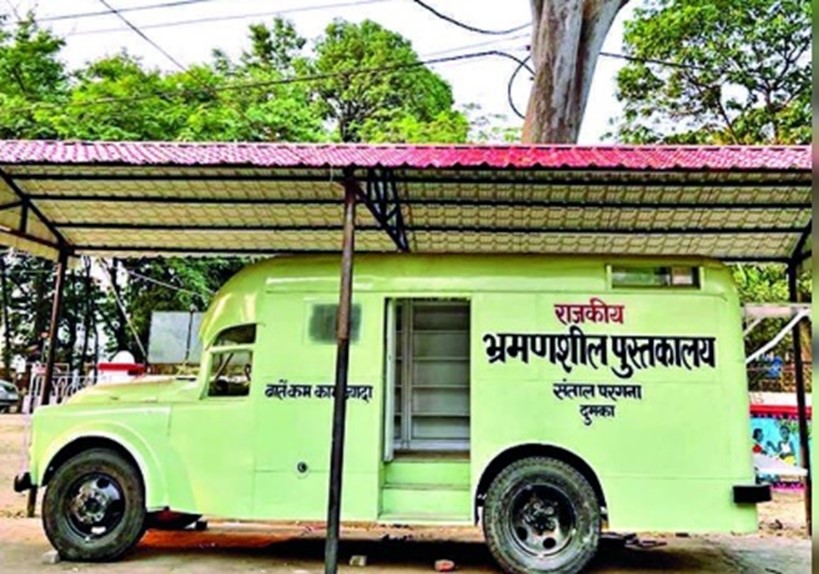
About the Dumka Mobile Library
- The vintage library on wheels, the brainchild of incumbent Dumka Deputy Commissioner Ravishankar Shukla, is being renovated for display during the two-day literature festival in this Dumka, Jharkhand.
- The vintage bookmobile was established in 1956. It was built on a US-made Fargo truck that was provided to the local state library in 1958.
- The mobile library was also fitted with a trolley behind it to carry bicycles so that books and other reading materials could be made available to places where it could otherwise not reach.
- The goal of presenting the historic bookmobile at the event (literary festival) is to familiarise residents of the district and participants from other states with the state library's glorious past.
Quote: “A library is not a luxury but one of the necessities of life.”- Henry Ward Beecher
Source:
Share the article
Get Latest Updates on Offers, Event dates, and free Mentorship sessions.

Get in touch with our Expert Academic Counsellors 👋
FAQs
UPSC Daily Current Affairs focuses on learning current events on a daily basis. An aspirant needs to study regular and updated information about current events, news, and relevant topics that are important for UPSC aspirants. It covers national and international affairs, government policies, socio-economic issues, science and technology advancements, and more.
UPSC Daily Current Affairs provides aspirants with a concise and comprehensive overview of the latest happenings and developments across various fields. It helps aspirants stay updated with current affairs and provides them with valuable insights and analysis, which are essential for answering questions in the UPSC examinations. It enhances their knowledge, analytical skills, and ability to connect current affairs with the UPSC syllabus.
UPSC Daily Current Affairs covers a wide range of topics, including politics, economics, science and technology, environment, social issues, governance, international relations, and more. It offers news summaries, in-depth analyses, editorials, opinion pieces, and relevant study materials. It also provides practice questions and quizzes to help aspirants test their understanding of current affairs.
Edukemy's UPSC Daily Current Affairs can be accessed through:
- UPSC Daily Current Affairs can be accessed through Current Affairs tab at the top of the Main Page of Edukemy.
- Edukemy Mobile app: The Daily Current Affairs can also be access through Edukemy Mobile App.
- Social media: Follow Edukemy’s official social media accounts or pages that provide UPSC Daily Current Affairs updates, including Facebook, Twitter, or Telegram channels.


